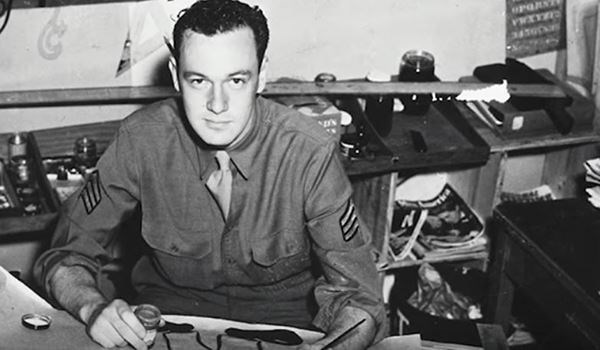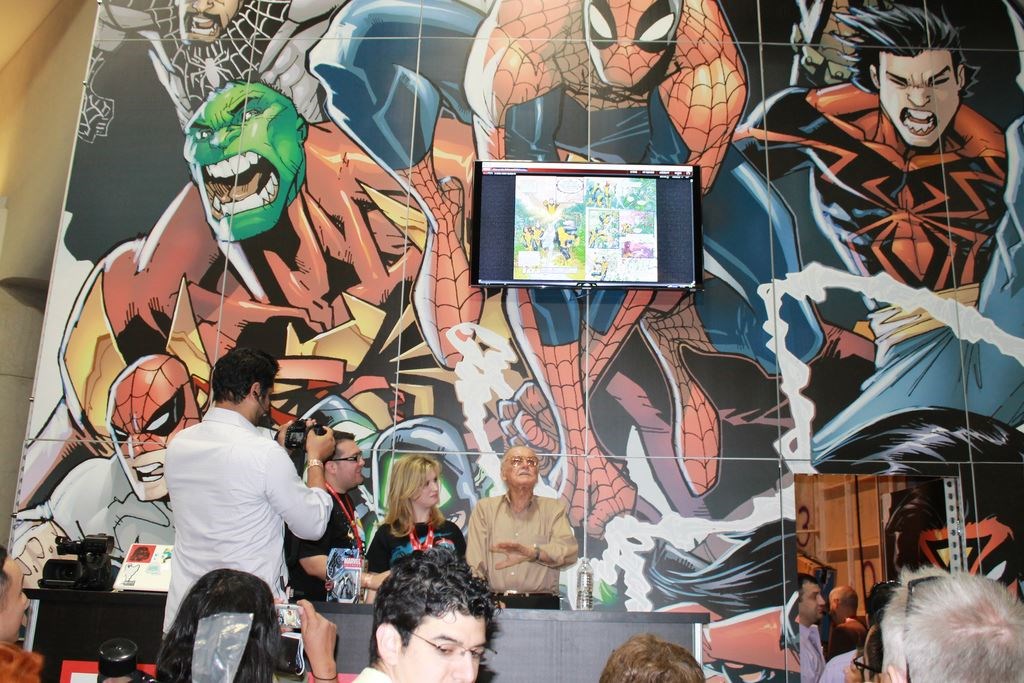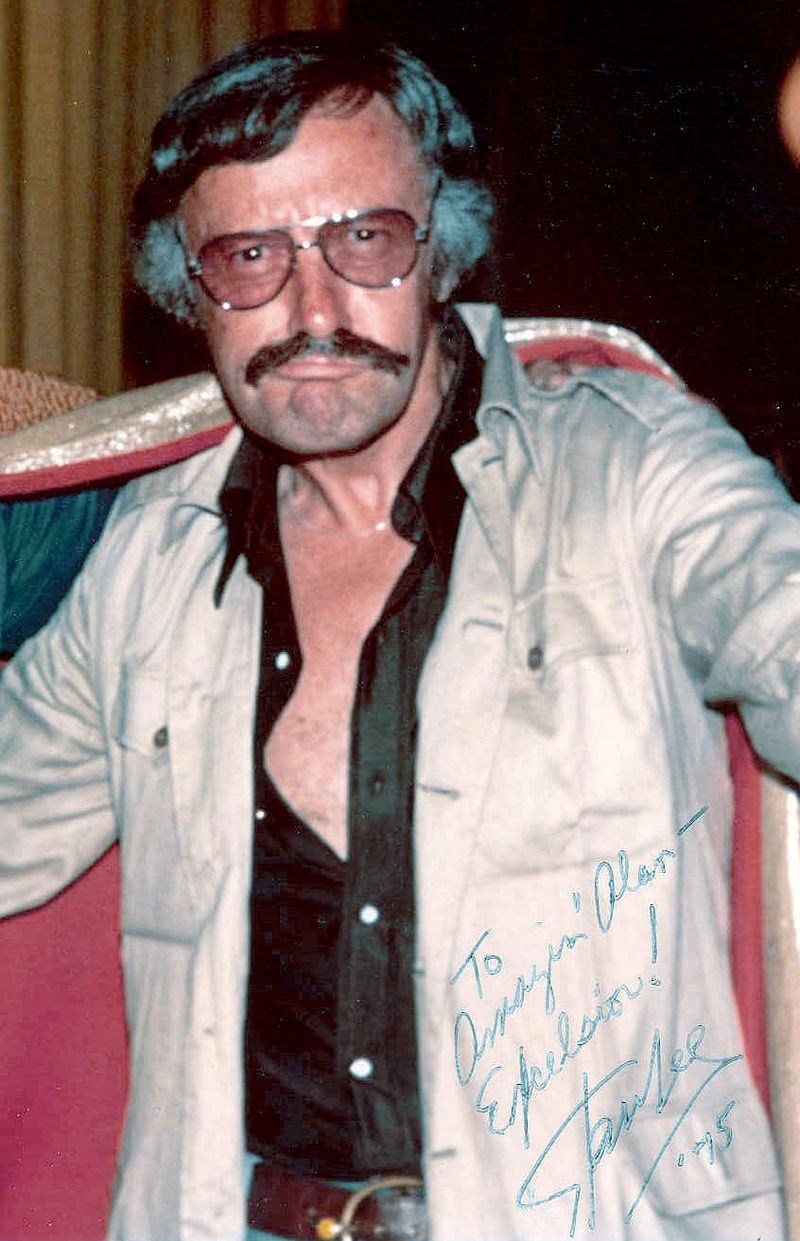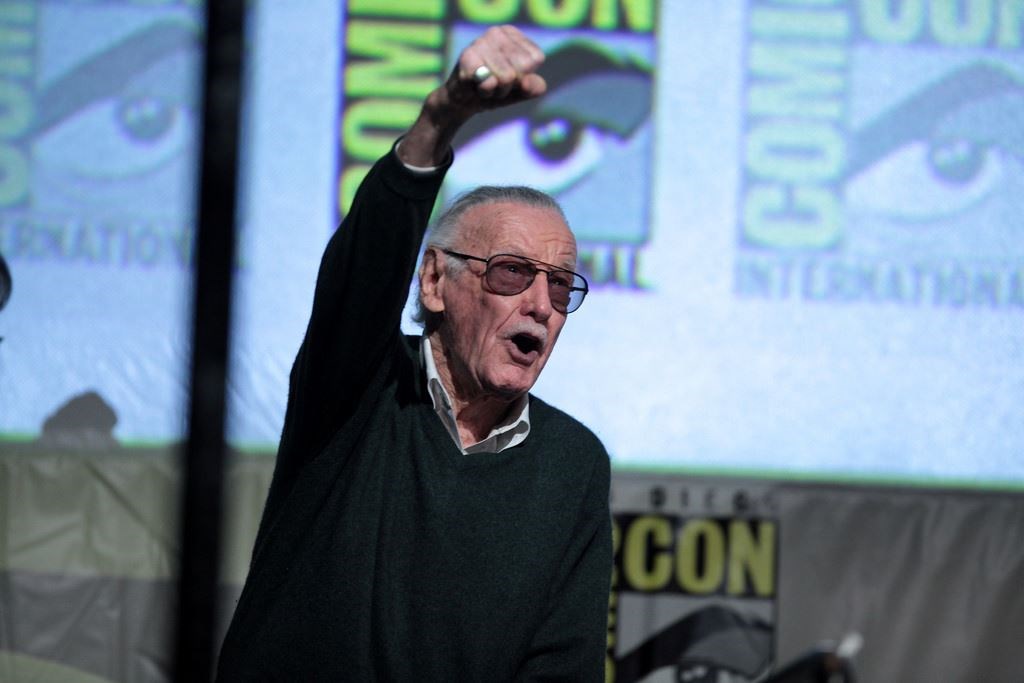Comic books to me are fairy tales for grown-ups. – Stan Lee
The Superhero Behind the Superheroes
“On the last day of planet Earth’s existence, people will think about Superman, blue tights and all… Every idea, every living thing, every culture, every language, every thought is in a continuous, non-stop march towards an inevitable change and an inevitable death… We just continue to grow, reshape, and die as long as the Earth keeps spinning and, it too, eventually dies… But it is through this process that we begin to create myths to keep something about us immortal and what better way to do that than through superheroes?” (Hogue). Superheroes have long been an essential part of every culture, in every form from gods and goddesses to warriors and knights. They are a symbol of what every society strives to become and an immortal element to humanity, as Hogue discusses in his essay “Why Do Americans Love Superheroes So Much?”. Even as our society changes rapidly, our fantastical heroes are there, unwavering, and the same good they were tens, hundreds, thousands of years ago. True heroes change the lives of those around them for the better. They utilize their talents and strengths for the well-being of others and causes greater than themselves. But the heroes we idolize do not solely exist in the fictional realm. There are only a handful of people we encounter in our daily lives who are heroes, but their impact is unquestionable. Heroes make a difference, and are driven by their desire to ensure change for the better. There are no limits in a hero’s work- whether they save millions of lives or transform one little girl’s life, they can still be a hero. They are the ordinary people who inspire other ordinary people to change their ordinary lives for the better. Heroes are the embodiment of the traits society aspires to possess, from courage to altruism to staying true to oneself, even when the world doesn’t believe in them.
One man who is the very embodiment of the traits society aspires to possess is the man who revolutionized superheroes as we know it: Stan Lee. Born on December 28, 1922, as Stanley Martin Lieber, Lee grew up in New York City during the Great Depression. His parents were Romanian-born Jews: his father a tailor and his mother a homemaker. His family’s financial situation made it difficult to find a large home, so he grew up in a small Lee during his army dayshttps://www.dodlive.mil/2017/06/28/stan-lee-proud-to-be-wwii-vet-thanks-service-members-for-serving/ apartment in Manhattan with his parents and younger brother, Larry. He loved reading and writing from a young age, and was later hired as an office assistant at Timely Comics, which would eventually become Marvel. A few months later, he became the editor and his career only skyrocketed from there. Lee worked in the comic world for the rest of his life, only stopping for 3 years in 1942 to join the army. But Lee’s revolution began much later. After nearly quitting his job in 1960, his wife encouraged him to create one last work he cared about. That one last work was the first of his revolution- The Fantastic Four. Lee was the creator of many beloved characters such as Spider-Man and The Incredible Hulk, and wasn't afraid to pioneer the comic world with his new methods and ideas of imperfection and humor. And with the technological developments of the 2000s, Lee was even able to see his visions on the big screen and make some cameos himself. The beloved creator passed away on November 12, 2018, at the age of 95, but his legacy of realistic superheroes lives on. Stan Lee’s impact on the entertainment world is undeniable. His ahead-of-its-time courage and drive to do things for the people helped him shape media into what it is today- realistic, relatable, yet still fantastical. A hero must have the ability to try new things, even in the face of fear or criticism, and act for the well-being of others. These traits are evident in Lee with his groundbreaking comics and how he changed people’s perception of nerds, comics, and superheroes. Stan Lee’s courageous decisions to defy societal norms and blazing of new trails for many to follow, and motivation to revolutionize entertainment for the good of the people, make him a real-life superhero.
Lee during his army dayshttps://www.dodlive.mil/2017/06/28/stan-lee-proud-to-be-wwii-vet-thanks-service-members-for-serving/ apartment in Manhattan with his parents and younger brother, Larry. He loved reading and writing from a young age, and was later hired as an office assistant at Timely Comics, which would eventually become Marvel. A few months later, he became the editor and his career only skyrocketed from there. Lee worked in the comic world for the rest of his life, only stopping for 3 years in 1942 to join the army. But Lee’s revolution began much later. After nearly quitting his job in 1960, his wife encouraged him to create one last work he cared about. That one last work was the first of his revolution- The Fantastic Four. Lee was the creator of many beloved characters such as Spider-Man and The Incredible Hulk, and wasn't afraid to pioneer the comic world with his new methods and ideas of imperfection and humor. And with the technological developments of the 2000s, Lee was even able to see his visions on the big screen and make some cameos himself. The beloved creator passed away on November 12, 2018, at the age of 95, but his legacy of realistic superheroes lives on. Stan Lee’s impact on the entertainment world is undeniable. His ahead-of-its-time courage and drive to do things for the people helped him shape media into what it is today- realistic, relatable, yet still fantastical. A hero must have the ability to try new things, even in the face of fear or criticism, and act for the well-being of others. These traits are evident in Lee with his groundbreaking comics and how he changed people’s perception of nerds, comics, and superheroes. Stan Lee’s courageous decisions to defy societal norms and blazing of new trails for many to follow, and motivation to revolutionize entertainment for the good of the people, make him a real-life superhero.
Lee’s unprecedented courage was what fueled him to break down barriers in the comic world and set an example for future comics. With his creation of the Fantastic Four, Lee’s barrier breaking was evident: “They were the kind of team I had been longing to write about. Heroes that were less than perfect. Heroes who didn't always get along with each other, but heroes who could be counted on when the chips were down” (Lee 118). Lee longed to write about “heroes that were less than perfect” and “who didn't always get along with each other”. He longed to take a different route with his work and put his heroes’ flaws into the spotlight. Lee added a contrasting element to the typical heroes, but made sure to still make them heroic and “could be counted on when the chips were down”. He was well aware of how everyone prioritized heroes’ abilities and strengths in comics at the time. But Lee wasn't afraid of what others would think and was eager to break barriers- the living definition of courage. His unprecedented courage allowed him to pioneer new comic book heroes that were not only important in the comic industry, but in society. These new heroes showed the people that they were powerful even with their flaws. Lee’s daring attitude helped him lay the foundation for this realistic hero revolution, a revolution that would inspire writers and readers alike. Lee’s courage also helped him pave a new path where superheroes weren’t just a fantasy, they mirrored the real world:
That metaphor [of the Civil Rights Movement in the X-Men] extended to the characters themselves, with Professor X and his vision of harmonious human-mutant coexistence standing in for Dr. Martin Luther King Jr., while Magneto’s rigid attitude toward the defense of mutant kind reflected the philosophy of Malcolm X. The Sentinels, a brand of massive mutant-hunting robot, were introduced two years later as readers watched on TV as black Americans were beaten and abused by white police officers. (Ciampaglia)
 Stan Lee at the Marvel Booth at the 2011 San Diego Comic ConFlickrLee’s courage wasn’t limited to the traits of his heroes, it extended to what his heroes represented. The parallels between Professor X and Magneto and MLK and Malcolm X are undeniable. Both pairs’ arguments were never black-and-white and the lines between good and bad were blurred. Additionally, the Sentinels were introduced as police brutality against African-Americans became even more prominent. It took Lee a lot of courage to include these realistic elements in his work, because these controversial topics could have brought an immense amount of backlash to Lee’s position as an editor and to him as a person. Comics weren’t supposed to address these impactful real-life issues and the Civil Rights Movement was not something everyone agreed with. Clearly, Lee didn't let potential criticism stop him and acted on his ideas for the comics. His courageous attitude allowed him to address movements that mattered and affected his readers’ daily lives, which empowered his readers. He paved the path for more comics to make a statement, reflect real life, and truly speak to the readers. Lee had the courage that others in his day didn't have, and he used that courage to pave a powerful new path for future generations.
Stan Lee at the Marvel Booth at the 2011 San Diego Comic ConFlickrLee’s courage wasn’t limited to the traits of his heroes, it extended to what his heroes represented. The parallels between Professor X and Magneto and MLK and Malcolm X are undeniable. Both pairs’ arguments were never black-and-white and the lines between good and bad were blurred. Additionally, the Sentinels were introduced as police brutality against African-Americans became even more prominent. It took Lee a lot of courage to include these realistic elements in his work, because these controversial topics could have brought an immense amount of backlash to Lee’s position as an editor and to him as a person. Comics weren’t supposed to address these impactful real-life issues and the Civil Rights Movement was not something everyone agreed with. Clearly, Lee didn't let potential criticism stop him and acted on his ideas for the comics. His courageous attitude allowed him to address movements that mattered and affected his readers’ daily lives, which empowered his readers. He paved the path for more comics to make a statement, reflect real life, and truly speak to the readers. Lee had the courage that others in his day didn't have, and he used that courage to pave a powerful new path for future generations.
Stan Lee’s drive to entertain the public and use of his strengths in revolutionizing a new method makes him the epitome of a hero. Lee displayed this through his desire to create quality comics and give people heroes that weren't just typical and boring:
Stan created tales filled with humor and pathos more sophisticated than anything that had previously been directed toward kids. He gave us a monster (the Thing) who wanted to be a man. He gave us outcasts (X-Men) hated by a world they sought to defend. He gave us a Christ figure (Silver Surfer) trapped on a world of human violence. And he gave us Peter Parker, a.k.a. Spider-Man, the guilt-ridden, perennially broke, always misunderstood teenager who became a patron saint to geek boys everywhere. Stan’s characters had soul… It wasn't just comics. For us nerd boys, it was our clubhouse, a place where we could go, something we could call our own. (Pitts)
Lee wanted to entertain the public with something different: relatable heroes that were “outcasts”, “a Christ figure… trapped on a world of human violence”, and “guilt-ridden… always misunderstood teenagers”. He added an element of humanity to his stories with his use of imperfect characters. This entertained his audience and taught them new things through an unexpected form. Lee used his strengths in writing to create content he truly loved, which is shown through his efforts to go above and beyond and make these comics something that speaks to the readers. But most importantly, Lee used his strengths to write revolutionary stories that people were truly inspired by. His work showed the nation that comics weren't just fantasy and made an immeasurable impact on both readers and future writers. When asked during an interview about the differences in superheroes at the time versus superheroes created by Lee himself, his answers showed his new revolution:
When I started working for the comics, all the heroes were really cut out of the same mold. They were tall and handsome and strong and noble. And as far as their dialogue went, I felt insufferably dull… I want you to imagine that you're walking down the street and you see a monster coming toward you… And in those days, if … any typical superhero, had seen this monster walking down the street in one of the stories, I think the dialogue would have gone something like this. A creature from another world - I'd better capture him before he destroys the city… Spider-Man, might say, who's the nut in the Halloween costume? I wonder what he's advertising. And it was just that shade of difference. I tried to do dialogue that represented the way real, flesh and blood, three-dimensional people would talk and would react to things. And it came across as satire. But I wasn't trying to write humor. I was trying to be realistic. So I must be funnier than I thought.
 Stan Lee in 1975WikipediaLee’s new era of comics included efforts to be realistic, with dialogue that “represented the way real, flesh, blood, three-dimensional people would talk and would react to things.” His example of Spider-Man is a great example in which he tries to appeal to the readers. And while his dialogue was supposed to be realistic, it is humorous, entertaining, and even sarcastic result is still a perfect change of dialogue. The motivation for this change in Lee’s work is his readers. He didn't have to rethink the dialogue of the comics and change the way people had always done it; this wasn't required of him. Yet, Lee wanted to make something his readers would truly love, so he entertained them as no comic book writer had ever before. He gave his readers characters that acted, talked, and thought just like them so that they could feel a little bit closer to being a superhero. Lee’s ability to put his readers before himself and do things for the good of the people was shown through his innovative creations and selfless attitude.
Stan Lee in 1975WikipediaLee’s new era of comics included efforts to be realistic, with dialogue that “represented the way real, flesh, blood, three-dimensional people would talk and would react to things.” His example of Spider-Man is a great example in which he tries to appeal to the readers. And while his dialogue was supposed to be realistic, it is humorous, entertaining, and even sarcastic result is still a perfect change of dialogue. The motivation for this change in Lee’s work is his readers. He didn't have to rethink the dialogue of the comics and change the way people had always done it; this wasn't required of him. Yet, Lee wanted to make something his readers would truly love, so he entertained them as no comic book writer had ever before. He gave his readers characters that acted, talked, and thought just like them so that they could feel a little bit closer to being a superhero. Lee’s ability to put his readers before himself and do things for the good of the people was shown through his innovative creations and selfless attitude.
 Stan Lee at the 2015 San Diego Comic ConWikimedia CommonsStan Lee was a real-life superhero because of his ability to overcome fear and try new things, and because he prioritized the people over himself. Lee’s revolutionary ideas helped shape the entertainment world as we know it today- whether it was plotlines of comics, books, and movies, realistic characters, or current events within fiction. While many real-life heroes possess traits such as courage and doing things for the people, Stan Lee’s was unique. He showed that courage didn't have to be in a life-and-death situation or when someone was going to get hurt. Instead, Lee showed how courage could also be paving new paths for future generations and breaking down societal barriers, courage that was about taking a step out there to improve what you truly love. He also showed that putting others before yourself wasn't only about making sacrifices. Lee showed that it was also about the inner drive that helps enrich the lives of others and a march towards a vision.
Stan Lee at the 2015 San Diego Comic ConWikimedia CommonsStan Lee was a real-life superhero because of his ability to overcome fear and try new things, and because he prioritized the people over himself. Lee’s revolutionary ideas helped shape the entertainment world as we know it today- whether it was plotlines of comics, books, and movies, realistic characters, or current events within fiction. While many real-life heroes possess traits such as courage and doing things for the people, Stan Lee’s was unique. He showed that courage didn't have to be in a life-and-death situation or when someone was going to get hurt. Instead, Lee showed how courage could also be paving new paths for future generations and breaking down societal barriers, courage that was about taking a step out there to improve what you truly love. He also showed that putting others before yourself wasn't only about making sacrifices. Lee showed that it was also about the inner drive that helps enrich the lives of others and a march towards a vision.
Stan Lee is an inspiration because he completely changed the perception of comics, nerds, and superheroes. He made nerds cool again. I still remember popping the Iron Man DVD into my DVD player in the summer of 2014. I remember being in awe at what Iron Man could do, how he went through so many traumatizing experiences but still managed to come out on top. And I remember wondering if I could be as cool as Iron Man one day. The thing that inspires me most about Stan Lee is how he was able to change what so many people thought -in a good way- without forcing his ideas. He inspires me to have an open mind every day and be open to new ideas, creations, and arguments. I was an arrogant, narrow-minded person growing up, and still occasionally judge people before I truly get to know them. I have learned from Marvel that there is always more to someone than you see and that you can't have a set perception of something before you've experienced it. Today, I have improved my mindset and am still working on it, and I owe it to the Marvel Universe. These superheroes taught me that you shouldn't judge a book by its cover- or a person by their origin story, because who knows? Maybe that little boy from Brooklyn you're bullying will live twice as long as you and end up helping save the world. Stan Lee’s heroes were a source of joy for everyone who read about them, regardless of age, gender, race, or religion. Even in our fast-paced, rapidly changing society, we always had those superheroes to hold onto. They taught us that no matter how ugly you look on the outside, even if you were covered in rocks, you still had a spark of good inside you. They taught us that no matter how big a mistake you made, even if it involved the death of your uncle, that you could still do great things. They taught us that if you control your inner demons, no matter how many buildings you smash, you are strong. His courage and “putting others first” attitude aided him in conveying these ideas through a form that many did not expect, and it has a ripple effect that can still be seen today. Our favorite superheroes, with their morals and values that we all strive to possess, are realistically brought to life by the greatest superhero of them all: Stan Lee. Excelsior!
Works Cited:
Ciampaglia, Dante A. “How Stan Lee's X-Men Were Inspired by Real-Life Civil Rights Heroes.” History.com, A&E Television Networks, 13 Nov. 2018, www.history.com/news/stan-lee-x-men-civil-rights-inspiration.
Gross, Terry. “Interview With Stan Lee.” ‘Fresh Air’ Remembers Marvel Comics Writer And Editor Stan Lee, NPR, 1991.
Hogue, Adam. “Why Do Americans Love Superheroes So Much?” Mic, Mic Network Inc., 13 June 2013, https://mic.com/articles/48431/why-do-americans-love-superheroes-so-much#.ICB585xDo.
Lee, Stan, and George Mair. Excelsior!: The Amazing Life of Stan Lee. Boxtree, 2003.
Pitts, Leonard, Jr. “Stan Lee Was a Comic-Book Hero to Nerds like Me. 'Nuff Said!” Miami Herald, Miami Herald, 12 Nov. 2018, www.miamiherald.com/opinion/opn-columns-blogs/leonard-pitts-jr/article221564925.html.
Page created on 2/12/2019 5:29:48 AM
Last edited 2/14/2019 8:10:31 PM

As an avid Marvel fan, I've always enjoyed the heroes and stories that I can get lost in reading about. And I owe it all to the man who started it off, Stan Lee. He is an inspiration to me in so many ways, and is a role model few can match up to. He has empowered many (including me!) with the diverse characters Marvel follows, taught me to love my flaws, and used his talents for the greater good. Even though he is no longer with us today, his legacy and spirit lives on through the millions of people he impacted.